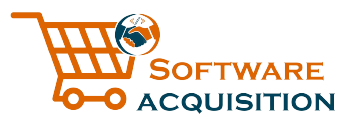In the world of finance, it is crucial to understand the classification of software as intangible assets and their significance in business. Intangible assets, such as intellectual property, play a vital role in a company’s value and competitive advantage. This article explores the concept of software intangible assets, their advantages, valuation methods, and strategies for monetization and management.
Key Takeaways
- Software is considered an intangible asset in finance.
- Intangible assets are assets that cannot be physically touched, including software licenses, trademarks, patents, and copyrights.
- Properly classifying and valuing software intangible assets is essential for financial reporting.
- Software assets can contribute to a company’s competitive advantage and overall value.
- Valuation techniques such as the market approach, income approach, and cost approach can be used to determine the value of software assets.
The Definition and Importance of Software Intangible Assets
Software intangible assets play a vital role in today’s business environment, providing companies with a competitive edge and enhancing their overall value. In the finance world, intangible assets are considered assets that cannot be physically touched but hold significant value for a company. Such assets include intellectual property like software licenses, trademarks, patents, customer lists, and copyrights.
Computer software, specifically, is classified as an intangible non-current asset and is often seen as a high expense for businesses. However, there are exceptions where software can be considered tangible and capitalized upon. To be classified as tangible, the software must be properly treated as property, plant, and equipment (PP&E) rather than an intangible asset.
The decision to capitalize on software and record its costs on the balance sheet allows for the delay of full expense recognition and the reconciliation of the cost over its useful life. Accounting standards and guidelines provide criteria for classifying software as PP&E, and the value of software assets can be determined through various valuation methods such as the market approach, income approach, and cost approach.
Overall, while software is intangible in nature, it is an important asset for many businesses and must be properly classified and valued. By recognizing software as an intangible asset, companies can leverage its potential to drive growth, enhance efficiency, and stay ahead in today’s digital-centric business landscape.
| Key points: |
|---|
| Software intangible assets are non-physical assets that hold significant value for businesses. |
| Computer software is classified as an intangible non-current asset, but exceptions exist where it can be considered tangible. |
| Proper classification and valuation of software assets are essential for financial reporting purposes. |
| Valuation methods like the market approach, income approach, and cost approach can be used to determine the value of software intangible assets. |
| Recognizing and capitalizing on software intangible assets can provide businesses with a competitive advantage and enhance overall value. |
Advantages of Software Intangible Assets
Incorporating software intangible assets into a business strategy can bring numerous advantages, including improved efficiency, cost-effectiveness, and greater innovation potential. Software assets offer businesses the ability to streamline processes, automate tasks, and optimize workflow, leading to increased efficiency throughout the organization. This can result in time and resource savings, allowing employees to focus on more value-added activities and contributing to overall productivity gains.
Moreover, software intangible assets can provide significant cost-effectiveness benefits. By utilizing software solutions, businesses can reduce expenses associated with manual labor, paper-based processes, and physical infrastructure. Software enables automation, digitalization, and online collaboration, minimizing the need for physical resources and reducing operational costs. Additionally, software assets can be upgraded and scaled to accommodate growth and changing business needs, eliminating the costs and limitations associated with traditional hardware-based systems.
Furthermore, software intangible assets foster greater innovation potential within organizations. With the right software tools and platforms, businesses gain access to advanced technologies, data analytics capabilities, and real-time insights. This empowers decision-making, enables data-driven strategies, and enhances problem-solving capabilities. Software assets can also facilitate agile development and experimentation, enabling businesses to quickly adapt to market changes and seize new opportunities. By leveraging software intangible assets, companies can stay ahead of the competition and drive innovation across various business functions.
| Advantages of Software Intangible Assets |
|---|
| Improved efficiency |
| Cost-effectiveness |
| Greater innovation potential |
Key Takeaways:
- Incorporating software intangible assets can lead to improved efficiency, cost-effectiveness, and greater innovation potential for businesses.
- Software assets enable streamlined processes, automation, and optimization, resulting in increased efficiency and productivity gains.
- Utilizing software solutions can reduce costs associated with manual labor, infrastructure, and provide scalability for business growth.
- Software intangible assets empower innovation through advanced technologies, data analytics, and agile development capabilities.
“Software intangible assets offer businesses the opportunity to optimize operations, reduce costs, and foster innovation, providing a competitive edge in the digital age.”
Valuation of Software Intangible Assets
Valuing software intangible assets requires a comprehensive understanding of different assessment approaches, including the market, income, and cost methods. Each method provides unique insights into the value of software assets, allowing businesses to make informed decisions regarding their financial management and strategic planning.
The market approach involves comparing the value of similar software assets that have been recently sold in the market. This method relies on market data and is commonly used when there is a sufficient number of comparable transactions. By analyzing market data, businesses can assess the fair market value of their software assets and make accurate financial projections.
The income approach focuses on estimating the future economic benefits that the software asset will generate. This method considers factors such as revenue generation, cost savings, and potential growth opportunities. By forecasting the expected cash flows and discounting them to their present value, businesses can determine the intrinsic value of their software assets and evaluate their profitability.
| Assessment Approach | Key Features |
|---|---|
| Market Approach | Relies on market data to determine fair market value |
| Income Approach | Estimates future economic benefits and evaluates profitability |
| Cost Approach | Calculates the cost required to develop or replace the software asset |
The cost approach involves calculating the cost required to develop or replace the software asset. This method considers factors such as development costs, labor expenses, and any associated licensing fees. By assessing the cost of creating or replicating the software asset, businesses can determine its value based on the principle of substitution.
Ultimately, accurate valuation of software intangible assets is crucial for financial decision-making and maximizing their potential. By employing a combination of assessment approaches and considering relevant factors such as market conditions, projected income, and development costs, businesses can effectively determine the value of their software assets and leverage them to drive growth and profitability.
Monetizing and Managing Software Intangible Assets
Successfully monetizing and managing software intangible assets involves strategic planning to capitalize on their value and ensure efficient use within an organization. With the increasing digitization of business operations, software assets have become crucial for driving growth and maintaining a competitive edge. To effectively monetize software assets, businesses need to implement a comprehensive strategy that encompasses various aspects such as licensing, outsourcing, and partnerships.
A key aspect of monetizing software intangible assets is the licensing model. By licensing their software, companies can generate revenue through the sale or lease of their intellectual property. This can be done through various types of licenses, such as perpetual licenses, subscription-based licenses, or software as a service (SaaS) models. Each licensing model has its own advantages and considerations, which businesses need to carefully evaluate based on their specific goals and target market.
Outsourcing is another avenue for monetizing software assets. By leveraging external expertise, businesses can offer their software solutions as a service to other organizations. This approach not only generates additional revenue but also allows companies to expand their reach and tap into new markets. When outsourcing software, it is important to establish clear terms and conditions, including intellectual property rights and data privacy considerations, to protect the company’s assets.
Successful management of software intangible assets involves not only monetization but also optimizing their use within an organization. This includes ensuring efficient deployment, regular updates and maintenance, and effective integration with other systems and processes. By actively managing their software assets, businesses can minimize costs, enhance productivity, and maximize the value derived from these assets.
| Key Strategies for Monetizing and Managing Software Intangible Assets |
|---|
| 1. Develop a comprehensive licensing strategy tailored to the target market and business objectives. |
| 2. Consider outsourcing opportunities to expand revenue streams and reach new markets. |
| 3. Establish clear terms and conditions to protect intellectual property rights and ensure data privacy when outsourcing software. |
| 4. Optimize the use of software assets through efficient deployment, regular updates and maintenance, and seamless integration with other systems and processes. |
In conclusion, successfully monetizing and managing software intangible assets requires a strategic approach that encompasses licensing, outsourcing, and effective asset management. By capitalizing on the value of software assets, businesses can generate revenue, expand their market presence, and drive growth. Furthermore, efficient management ensures that software assets are utilized to their full potential, minimizing costs and maximizing value within the organization.
Protecting Software Intangible Assets
Protecting software intangible assets is crucial to safeguarding a company’s intellectual property and maintaining a competitive advantage in the market. With software playing an increasingly vital role in business operations, it is essential to implement robust measures that prevent unauthorized use or infringement.
One effective strategy for protecting software intangible assets is by leveraging intellectual property laws. These laws provide legal frameworks for safeguarding innovations and creations, including software, through mechanisms such as patents, copyrights, and trademarks. By obtaining and enforcing these legal protections, companies can establish exclusive rights over their software, preventing competitors from copying or using their intellectual property without authorization.
In addition to legal protections, implementing strong security measures is crucial in safeguarding software intangible assets. This includes utilizing encryption technologies, access controls, and secure development practices to minimize the risk of unauthorized access or theft. Regular software audits and vulnerability assessments can also help identify and address any potential weaknesses in a company’s software systems, ensuring that valuable intangible assets are adequately protected.
Table: Examples of Intellectual Property Laws
| Type of Intellectual Property | Legal Protection |
|---|---|
| Patents | Grant exclusive rights to an invention, preventing others from making, using, or selling the patented technology without permission. |
| Copyrights | Protect original works of authorship, including software code, from being copied, distributed, or used without authorization. |
| Trademarks | Provide exclusive rights to distinctive signs, symbols, or logos associated with a company or its products, preventing others from using similar marks that may cause confusion among consumers. |
By adopting a comprehensive approach to protecting software intangible assets, companies can safeguard their intellectual property, maintain a competitive edge, and maximize the value of their software assets in today’s digital landscape.
Maximizing the Potential of Software Intangible Assets
To fully maximize the potential of software intangible assets, businesses need to focus on continuous development, upgrades, and utilizing these assets to fuel their growth. In today’s dynamic business landscape, software plays a crucial role in driving innovation, improving efficiency, and gaining a competitive edge. However, simply having software assets is not enough; it is essential to proactively manage and optimize their value.
One way to maximize the potential of software intangible assets is through continuous development. With technology evolving at a rapid pace, businesses must keep their software assets up-to-date to meet changing market demands. Regular updates and enhancements not only ensure that the software remains functional and secure but also provide opportunities for incorporating new features and functionalities. By staying ahead of the curve and investing in ongoing development, businesses can unleash the full potential of their software assets.
Upgrading software is another critical aspect of maximizing its potential. As new versions and releases become available, businesses should assess the benefits and consider upgrading their existing software assets. Upgrades can offer improved performance, enhanced user experience, and access to advanced functionalities. Moreover, staying current with the latest software versions helps mitigate cybersecurity risks and ensures compatibility with other systems and applications.
Utilizing Software Assets to Drive Growth
Utilizing software assets strategically is key to unlocking their full potential. Businesses can leverage their software assets to streamline processes, automate repetitive tasks, and drive operational efficiency. For example, enterprise resource planning (ERP) software can integrate various business functions, enabling seamless data flow and enhancing decision-making capabilities. By harnessing the power of their software assets, businesses can optimize resource allocation, improve productivity, and achieve sustainable growth.
Furthermore, software assets can be monetized to generate additional revenue streams. By licensing their software to other companies or offering Software-as-a-Service (SaaS) solutions, businesses can tap into new market segments and expand their customer base. Monetizing software assets not only provides financial benefits but also enhances brand recognition and strengthens market position.
In conclusion, software intangible assets have immense potential to drive business growth and competitive advantage. To fully maximize their value, businesses should prioritize continuous development, upgrades, and strategic utilization of software assets. By investing in these areas, businesses can harness the power of software to innovate, optimize operations, and achieve sustainable success in the digital age.
Software Intangible Assets in the Digital Age
In the digital age, software intangible assets have become even more essential for businesses, with the rapid growth of technology and the increasing reliance on digital platforms. As companies strive to stay competitive and meet the evolving demands of consumers, software assets play a crucial role in driving innovation, enhancing efficiency, and enabling business growth.
One of the key advantages of software intangible assets in the digital age is their ability to streamline processes and automate tasks. With the development of sophisticated software solutions, businesses can now automate routine operations, freeing up valuable time and resources that can be redirected towards more strategic initiatives. This not only improves efficiency but also allows for better resource allocation and cost savings.
In addition, software intangible assets enable businesses to adapt to the changing needs of the digital landscape. As technology continues to advance, businesses must embrace digital transformation to stay relevant. Software assets provide the foundation for digital innovation, allowing companies to create new products and services, enhance customer experiences, and explore emerging technologies such as artificial intelligence, machine learning, and data analytics.
| Advantages of Software Intangible Assets in the Digital Age |
|---|
| Streamlined processes and automation |
| Improved efficiency and resource allocation |
| Facilitates digital innovation and transformation |
In summary, software intangible assets have become indispensable for businesses operating in the digital age. Their ability to automate processes, improve efficiency, and drive innovation positions them as critical assets for companies striving to thrive in an increasingly digital world. As technology continues to advance, businesses must recognize the value and potential of their software assets, properly classify and value them, and implement effective strategies to maximize their benefits.
Conclusion
Understanding the classification, valuation, and management of software intangible assets is vital for businesses to leverage their value and stay competitive in the ever-evolving financial landscape.
Software, despite being intangible in nature, is considered a valuable asset for many companies. While it is typically classified as an intangible non-current asset, there are cases where software can be treated as property, plant, and equipment (PP&E). Properly classifying software as PP&E allows for the delay of full expense recognition and the spreading of costs over its useful life, providing financial benefits to the company.
Valuing software intangible assets can be challenging but necessary. Accounting standards and guidelines provide criteria for determining the value of software assets, including methods such as the market approach, income approach, and cost approach. These methods help businesses accurately assess the worth of their software assets and make informed financial decisions.
In addition to valuation, effectively managing software intangible assets is crucial. This involves strategies for monetization, protection, and maximizing the potential of these assets. Monetization methods can include licensing, selling, or leasing software to generate revenue. Protecting software assets from unauthorized use or infringement requires implementing intellectual property laws and security measures. Finally, maximizing the potential of software intangible assets involves ongoing development, upgrades, and leveraging software assets to drive business growth.
FAQ
Are software intangible assets?
Yes, software is considered an intangible asset in finance.
What are intangible assets?
Intangible assets are assets that cannot be physically touched and include intellectual property, such as software licenses, trademarks, patents, films, customer lists, and copyrights.
How is computer software classified?
Computer software is classified as an intangible non-current asset.
Can software be considered tangible?
Software can be considered tangible and capitalized upon if properly classified and treated as property, plant, and equipment (PP&E) rather than an intangible asset.
What are the advantages of capitalizing on software?
Capitalizing on software allows for the delay of full expense recognition and the reconciliation of the cost over its useful life.
How is the value of software assets determined?
The value of software assets can be determined through various valuation methods such as the market approach, income approach, and cost approach.
How can software intangible assets be monetized and managed?
Software intangible assets can be monetized and managed by capitalizing on their value and implementing effective management strategies to optimize their potential.
How can software intangible assets be protected?
Software intangible assets can be protected through intellectual property laws and measures taken by businesses to safeguard their software assets.
What is the role of software intangible assets in the digital age?
Software intangible assets play a crucial role in the digital age, as advancements in technology and increasing reliance on digital platforms have heightened their importance.



